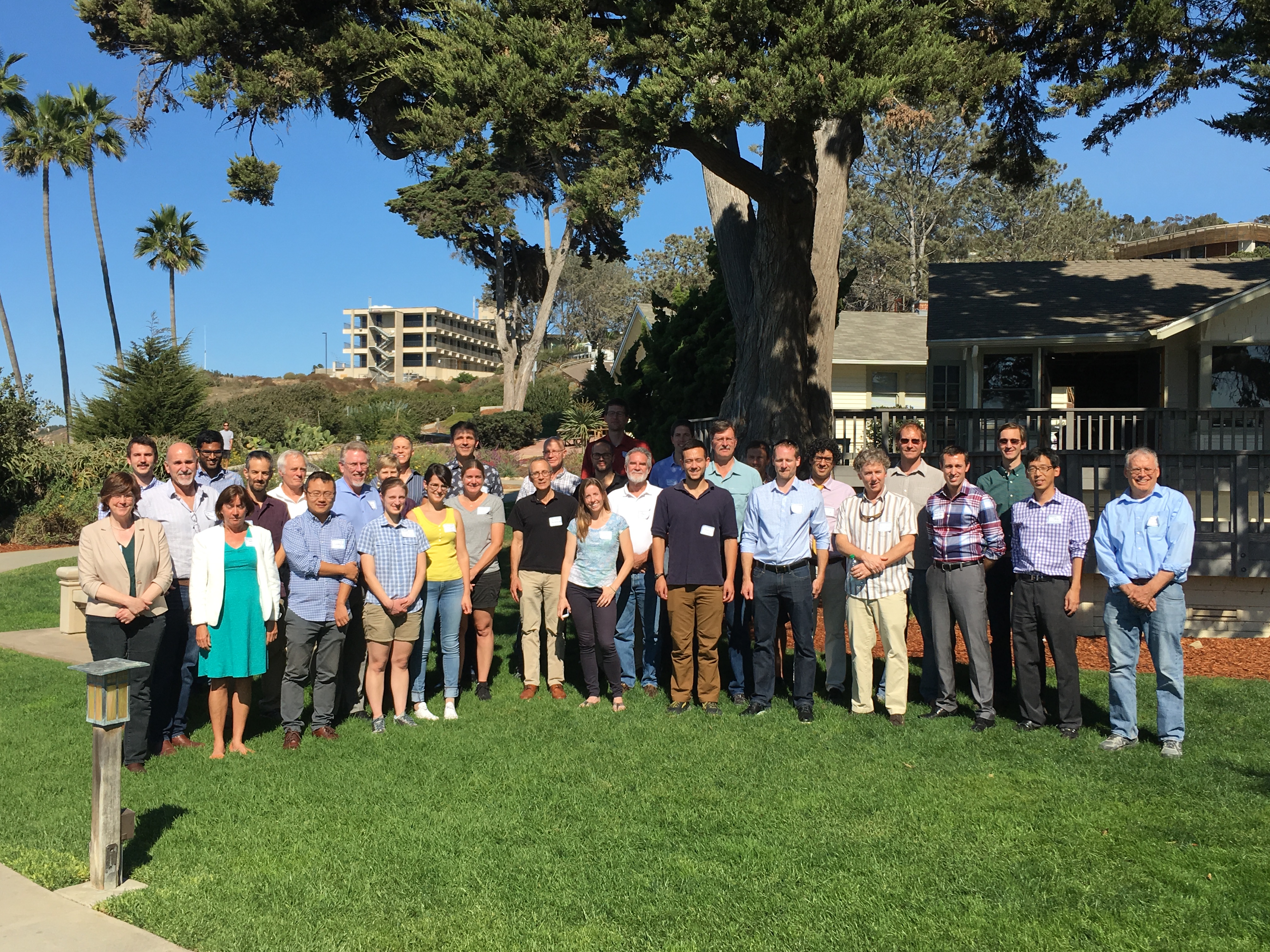Conveners: Shimon Wdowinski, Kristine Larson, Adrian Borsa, Dan Cayan
Location: Scripps Institution of Oceanography, UC San Diego
Date of Workshop: October 25-27, 2017
One of the major challenges of the 21st century is securing freshwater for an increasing world population as well as for preserving natural ecosystems. Geodetic techniques, which provide highly accurate measurements of the Earth’s solid and aquatic surfaces and their changes over time, are fairly new tools for monitoring water resources. Technologies such as Radar Altimetry, LIDAR, GPS Interferometric Reflectometry (GPS-IR), and InSAR provide direct observations of surface water levels and their changes in rivers, lakes, and wetlands. Gravimetric observations (e.g., GRACE) provide indirect information on terrestrial water storage and its changes over time. InSAR and GPS also provide indirect observations of hydrological loads (e.g., lake level changes) as well as groundwater flow and storage by monitoring cm-level land subsidence above alluvial aquifer systems. GPS-IR can be used to measure soil moisture, snow depth, and vegetation water content changes.
However, using geodetic observations for hydrology can be challenging, because of the following:
1) Separating hydrological loading signals from tectonics and other signals – Geodetic observations provide an accurate measure of surface displacements and gravity changes induced by hydrological and non-hydrological processes induced by tectonics, atmosphere, ocean, or the mantle (GIA). Separating the effects of the various loads is important for both hydrologic and tectonic usage of the geodetic observations.
2) Obtaining meaningful hydrological interpretation – Hydro-geodetic observations typically describe the Earth’s surface or gravity response to hydrological processes. A full usage of the observations require understanding and modeling of the hydrological process, whether it relates of groundwater flow, aquifer compaction, or hydrological changes near or above the surface. Mechanical modeling of geodetic observations often rely on elastic models, which are limited in their capability to model more complex hydrological processes. Thus, there is a need to adopt or develop more complex and realistic models that can better explain the observed hydro-geodetic signal.
3) Advancing Interdisciplinary Research between geodesists and hydrologists – Hydrogeodetic observations provide only partial information on hydrological processes and often in ways that cannot be immediately used by hydrologists. For example, InSAR measurements from wetlands detect surface water level changes, whereas hydrologists need “absolute” water level values in order to derive the hydrological head that drives the surface flow. Similarly, measurements of land subsidence induced by groundwater changes, cannot be used directly by hydrologists in their models. Geodesists need to work directly with hydrologists to improve their products. Similarly, hydrologists are not trained to use geodetic observations, and thus are unlikely to change their modeling softwares to use them.
The goal of the proposed workshop is to bring together key people in the two communities to develop a road map for future hydrogeodetic research.






